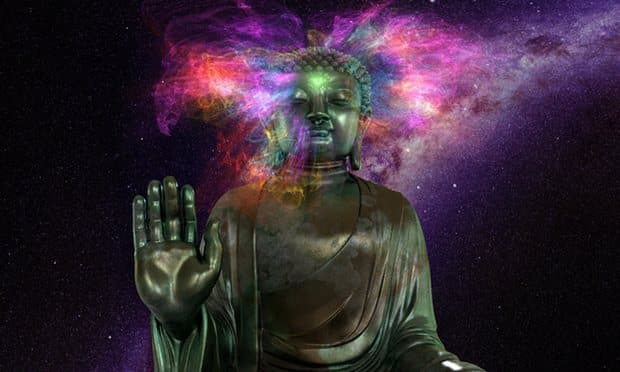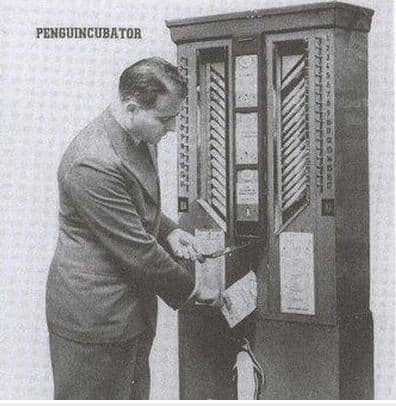When someone writes an article titled, “Meditation in virtual reality: it’s like French philosophy meets the Matrix,” you know I’m hooked. I cut my teeth on contemporary French philosophy and made sure I saw the Matrix on opening night (and numerous times since). But while Rory Carroll’s article in The Guardian covers meditation in VR, it actually raises fascinating questions on how and where we will distribute experiences in VR. And the popular self-help guru, Deepak Chopra, has a vision that may impact far more than some virtual meditation exercises.
Meditation in Virtual Reality

I hadn’t really given the topic of virtual reality and meditation much thought until a student brought it up in my New Media and Society seminar this spring. Coming from India, she did a presentation on how VR may reshape her religious practices. Her argument was that centering ourselves requires breaking free of the chaos of daily life. We block the world out the world when we read a novel on the subway – immersing ourselves in another location. We do the same when we sit quietly in a temple, the physical space helping focus our thoughts. Why not do the same with VR glasses? Obviously, not the current bulky models like Samsung Gear VR (as nicely designed as they are), but with the VR devices we will have in a few years, which will probably be not all that different than our current eyewear.
So perhaps VR and meditation are not such strange bedfellows afterall. Deepak Chopra clearly thinks so. His latest venture, a meditation in virtual reality experience titled, “Finding Your True Self“, is being produced by Wevr, the Los Angeles Virtual Reality studio. Wevr has produced a number of striking VR experiences, including Irrational Exuberance and the iconic theBlu: Whale Encounter (both of which we tried out at Sundance) and Old Friend, an award winning immersive dance party animation. All rank as some of our all-time favorites.
Chopra sees virtual reality fitting perfectly with the quest for a more grounded self. VR is just another instance of our simulated world:
There was no paradox between finding your true self via virtual reality because everyday reality is itself a simulation . . . . I’ve never been too attached to tradition. We’re an evolving species. If you don’t keep up with technology you’re not in touch with the zeitgeist and you may as well pack it in.
A New VR Distribution Model
Of course, if you’re a purist in your quest for enlightenment, talk of meditation through a tech gadget may make you cringe. But Chopra’s distribution model is what I find so fascinating. The App will cost ten dollars and the VR experience will run for about 20 minutes. He envisions us not using the app at home, but in transient locations.
Chopra, who narrates the simulation, hopes to sell the experience via booths at airports, hospitals and other locations, and via phones and laptops enabled with VR platforms . . . In 20 minutes you get a journey to enlightenment. The goal is to feel grounded and understand yourself a little better.
In other words, it’s meditation on-the-go, using the immersive qualities of virtual reality to pull you out of your day-to-day world (or at least the horrors of modern day air travel). And VR might be able to do that much more effectively than a book or trying to find a quiet moment among the endless rows of plastic seats and cheap takeout food.
Guru or not, give Chopra credit for the marketing genius that he is. And if short meditation in virtual reality experiences do not catch on, short-form VR for entertainment and learning may well become our everyday doorway to immersive experiences.
The Past is the Future
If all this seems a little hard to imagine, just remember that the paperback book itself was once a new distribution model. It was an offshoot of a disruptive technology – the railways – and the democratization of travel. Paperbacks were initially sold at railway stations to a public hungry for knowledge and entertainment but lacking the time and resources to read at home in a “real” library like the upper class. But paperbacks only came into their own in the 1930’s with Allen Lane’s founding of Penguin Publishing House, which prided itself on selling good quality books for the cost of a package of cigarettes. They were, as the novelist J. B. Priestley said, “perfect marvels of beauty and cheapness.” Such a wonderful turn of phrase.
And Lane was ever inventive, breaking censorship barriers by publishing the complete text of D. H. Lawrence‘s Lady Chatterley’s Lover. He even tried selling books through (God forbid, a bookstore owner might gasp) vending machines. When the American offshoot Pocket Books opened in New York, they didn’t offer stock to bookstores, but instead sold their initial run at Macy’s Department Store.

As a format, paperbacks helped popularize the modern novel, bought classic writers to the public at large, and fostered a shared experience in popular culture.
Chopra’s meditation app may not appeal your sensibilities, but the distribution model of short VR experiences could become the paperback book of a new era. We will still need our VR labs for deeply immersive experiences that require time to process and reflect. But in the near future, we will also seek out transient virtual experiences, swimming underwater by a coral reef, or floating through a national park. In the not so distant future, virtual reality will become part of our daily lives.
Emory Craig is a writer, speaker, and consultant specializing in virtual reality (VR) and artificial intelligence (AI) with a rich background in art, new media, and higher education. A sought-after speaker at international conferences, he shares his unique insights on innovation and collaborates with universities, nonprofits, businesses, and international organizations to develop transformative initiatives in XR, AI, and digital ethics. Passionate about harnessing the potential of cutting-edge technologies, he explores the ethical ramifications of blending the real with the virtual, sparking meaningful conversations about the future of human experience in an increasingly interconnected world.

